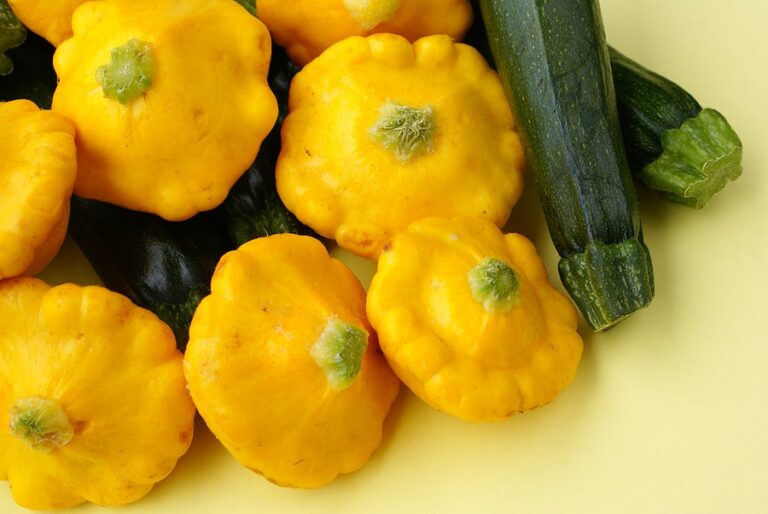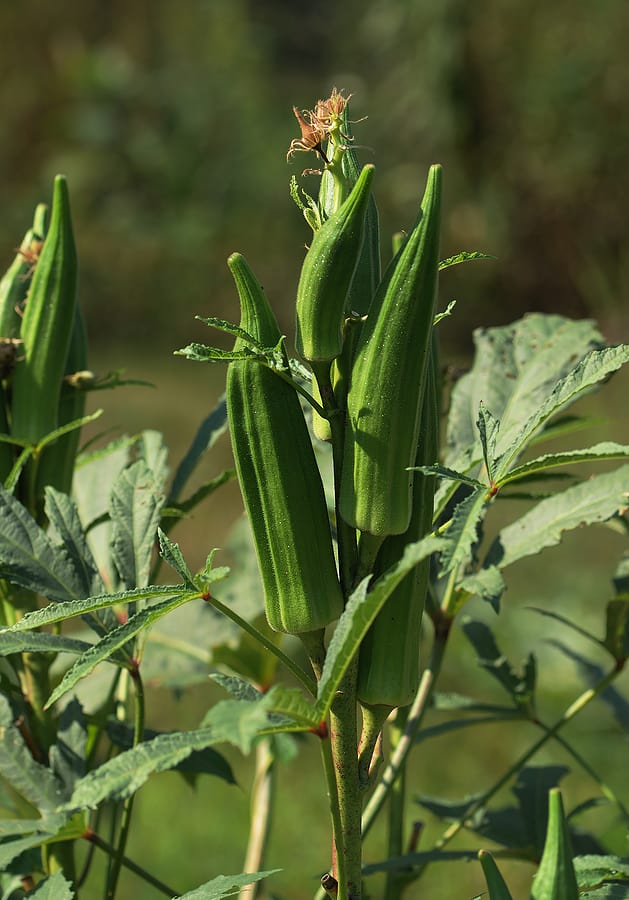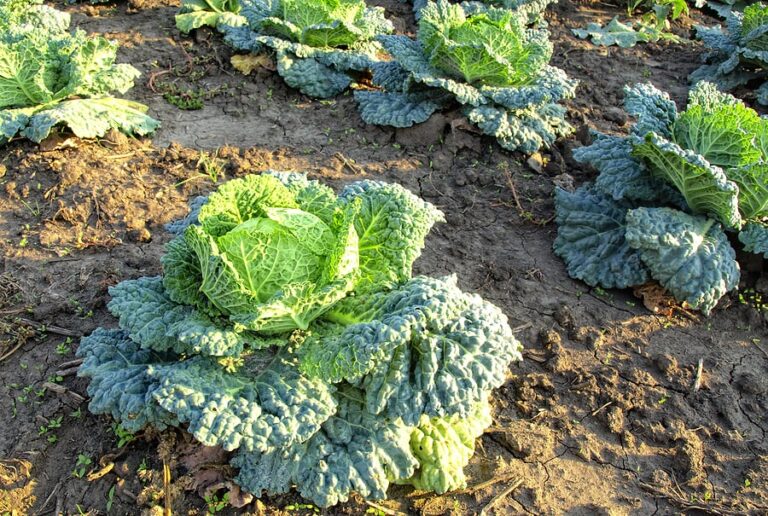The Gardener’s Guide to Harvesting and Storing Melons for Peak Flavor
After growing dozens of melon varieties in my warm Sonoma Valley garden over the past three decades, I’ve learned that harvesting melons at peak ripeness—and storing them properly—is just as important as planting and caring for the vines. Knowing the right time to pick and how to handle each type—whether it’s a fragrant Galia, a smooth-skinned Honeydew, or a hefty Crenshaw—can mean the difference between a bland fruit and a sweet, unforgettable bite.
In this post, I’ll walk you through how to tell when melons are perfectly ripe, how to harvest them without damaging the fruit or plant, and how to store different melon types for the best flavor and longest shelf life. These are practical, tested tips based on years of hands-on experience and advice shared by other seasoned gardeners.Harvest melons when small cracks appear in the stem where it joins the fruit. Once the cracks circle the stem and the stem looks shriveled, the melon will break off with a slight twist. If more than light effort is needed to remove it from the vine, it is not ripe.

When to Harvest Melons
Here’s what I’ve learned in the garden:
- Harvest smooth-skinned muskmelons—which include honeydew, Crenshaw, and casaba–when they turn cream-colored. The blossom end will give slightly when pressed, and the fruit will readily separate from the stem.
- Harvest net-skinned cantaloupe when the rind netting changes from gray-green to creamy and the background turns golden. The fruit will have a sweet-musky aroma, and the stem will slip easily from the fruit.
- Harvest watermelon when the ground spot–where the melon rests on the ground–turns a creamy yellow and the stem turns brown and begins to curl.
- Melons on the same vine typically ripen over a short period of time. As soon as the first melon is ripe, the others will come to harvest within 3 to 4 weeks.
- After the first melon is harvested, cut back on watering—just enough to keep the vines from wilting; this will concentrate sugars in the fruit.
How to Know a Melon Is Ripe
Here are some general rules for judging the ripeness of a melon:
- Smell – the melon will have a strong, “musky” or perfumey aroma at the stem-end of the melon.
- Skin — the melon’s skin color will change, from green to yellow or tan for muskmelons and cantaloupes; the underside of a watermelon will change from green to creamy where it touches the ground.
- Stem – the stems will separate or slip from the fruit with little effort. First, a concentric crack will appear where the stem and the fruit meet then the stem will completely separate (called “full slip”). When signs of slip appear the fruit is ripe and should be picked and eaten within a few days; don’t let the fruit turn soft and mushy.
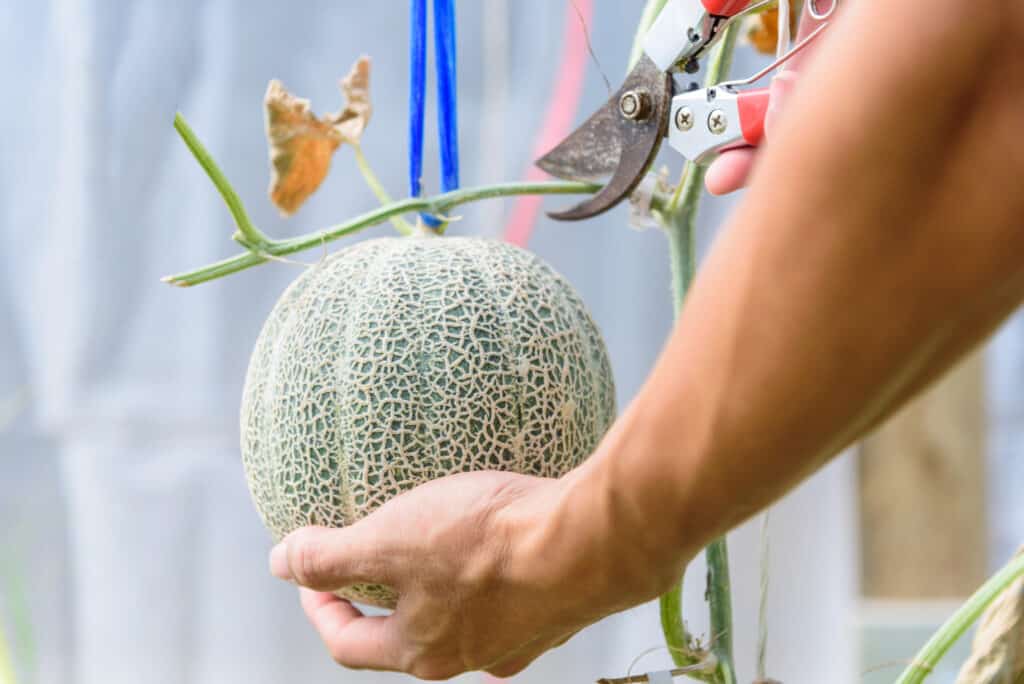
How to Harvest Melons
- A fully ripe melon will separate from the vine with light pressure. You can also cut melons from the vine with a sharp knife, garden pruner, or lopper.
- Leave an inch of stem attached to the fruit to keep it from rotting if you don’t plan to use a harvested melon immediately.
More tips on growing melons at How to Grow Muskmelon or Cantaloupe and also at How to Grow Winter Melons.
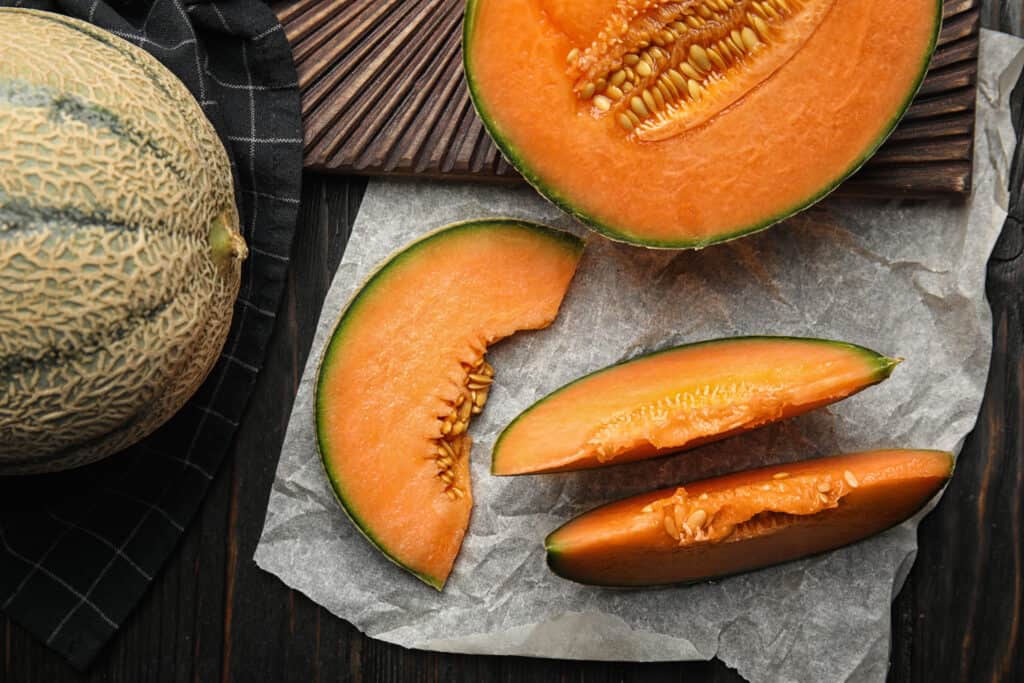
How to Store Melons
- For the best flavor, allow a melon to rest for a day or two before serving.
- Store whole ripe melons in the refrigerator for up to a week to avoid spoiling; cut melons will keep for up to three days. If you have ripe melons you can’t use immediately, dice or cut the flesh into balls and freeze them for slushies or cold soup.
- Store melon slices in a perforated plastic bag in a refrigerator. You can purchase perforated plastic bags or make your own by punching 20 holes in a medium-size bag; use a hole punch or sharp object.
- Melons should be kept cold and moist (50°F/10°C and 95 percent relative humidity). Creating cold and moist storage is a challenge: refrigerators provide the cold, but also have dry air.
- Melons are susceptible to chilling injury at temperatures below 50°F; chilling injury symptoms include surface pitting, water loss, yellow, browning of rinds, decreased sweetness, and rapid deterioration.
Melons Overview: The Ultimate Guide to Growing Melons: From Planting to Harvest
Watermelons: How to Grow Watermelons from Seed to Harvest: Ultimate Guide for Sweet, Juicy Success
Related Posts:
Planting & Growing Basics
- When to Plant Melons for the Best Harvest
- Best Soil and Location for Growing Melons
- Planting and Spacing Melons Step-by-Step
- Growing Melons on Mounds and Hills: A Proven Method for Stronger Plants and Sweeter Fruit
Care & Maintenance
- Watering and Feeding Melons for Maximum Sweetness
- Caring for Melons Through the Season: A Practical Guide
- Melon Pollination: How It Works and When to Lend a Hand
- Melon Pests and Diseases: Identification and Control
Space-Saving Techniques
- Melons in Small Spaces: Container Growing Made Easy
- Growing Melons Vertically: Save Space and Boost Harvests
- Trellising Cantaloupes: Why and How
Ripeness & Harvesting
- How to Tell When Melons Are Ripe
- How to Know When Cantaloupes Are Ripe: Slip Stage and Other Signs
- The Gardener’s Guide to Harvesting and Storing Melons for Peak Flavor
Melon Types & Varieties
- Summer Melons vs Winter Melons: Know the Difference
- Growing Gaila, Honeydew, and Crenshaw Melons
- Best Cantaloupe Varieties for Home Gardens
Garden Planning Books at Amazon:
- Vegetable Garden Almanac & Planner
- Kitchen Garden Grower’s Guide Vegetable Encyclopedia
- Vegetable Garden Grower’s Guide
- Tomato Grower’s Answer Book
More harvest tips for these crops:
Learn when and how to harvest your favorite vegetables for the best flavor and texture. Get storage tips for each crop. Click on the vegetable you are growing below.
- Artichoke
- Arugula
- Asparagus
- Beans
- Beets
- Broccoli
- Brussels Sprouts
- Cabbage
- Cantaloupe — Melons
- Carrots
- Cauliflower
- Celery
- Chard
- Collards
- Corn, Sweet
- Cucumbers
- Eggplant
- Endive and Escarole
- Garlic
- Jerusalem Artichoke
- Kale
- Kohlrabi
- Leeks
- Lettuce
- Melons
- Okra
- Onions
- Parsnips
- Peas
- Peppers
- Potatoes
- Pumpkins
- Radicchio
- Rhubarb
- Rutabaga
- Spinach
- Squash, Summer
- Squash, Winter
- Sunchokes
- Sweet Potato
- Swiss Chard
- Tomatillo
- Tomatoes
- Turnips
- Watermelon


